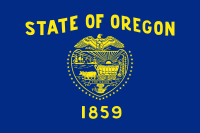
The Virginia Defense Force (VDF) is the official state defense force of Virginia, one of the three components of Virginia's state military along with the Virginia National Guard which includes the Virginia Army National Guard, the Virginia Air National Guard, and the unorganized militia. As of 2023, the VDF has approximately 275 personnel. The VDF is the descendant of the Virginia State Guard, the Virginia Regiment, and ultimately the Colonial Virginia militia of the Virginia Colony.

California's involvement in the American Civil War included sending gold east to support the war effort, recruiting volunteer combat units to replace regular U.S. Army units sent east, in the area west of the Rocky Mountains, maintaining and building numerous camps and fortifications, suppressing secessionist activity and securing the New Mexico Territory against the Confederacy. The State of California did not send its units east, but many citizens traveled east and joined the Union Army there, some of whom became famous.
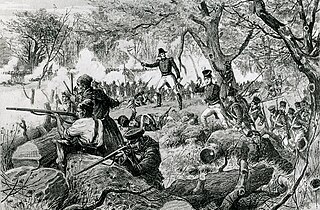
When the United States and the United Kingdom went to war against each other in 1812, the major land theatres of war were Upper Canada, Michigan Territory, Lower Canada and the Maritime Provinces of Nova Scotia, New Brunswick, Prince Edward Island and Cape Breton . Each of the separate British administrations formed regular and fencible units, and both full-time and part-time militia units, many of which played a major part in the fighting over the two and a half years of the war.

The militia of the United States, as defined by the U.S. Congress, has changed over time. During colonial America, all able-bodied men of a certain age range were members of the militia, depending on each colony's rule. Individual towns formed local independent militias for their own defense. The year before the U.S. Constitution was ratified, The Federalist Papers detailed the Founding Fathers' paramount vision of the militia in 1787. The new Constitution empowered Congress to "organize, arm, and discipline" this national military force, leaving significant control in the hands of each state government.

The Pacific coast theater of the American Civil War consists of major military operations in the United States on the Pacific Ocean and in the states and Territories west of the Continental Divide. The theater was encompassed by the Department of the Pacific that included the states of California, Oregon, and Nevada, the territories of Washington, Utah, and later Idaho.
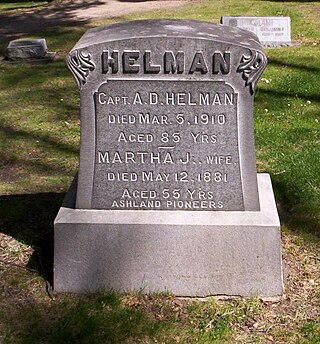
Abel D. Helman was an American pioneer of Ashland, Oregon.
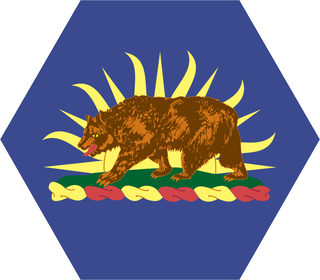
The California Army National Guard is one of three components of the California National Guard, a reserve of the United States Army, and part of the National Guard of the United States. The California Army National Guard is composed of 18,450 soldiers. Nationwide, the Army National Guard comprises approximately one half of the US Army's available combat forces and approximately one third of its support organization. National coordination of various state National Guard units are maintained through the National Guard Bureau.

The 6th Arkansas Infantry Regiment, commonly known as the "Sixth Arkansas", was a line infantry formation of the Confederate States Army in the Western Theater of the American Civil War.
The Missouri State Militia was a federally funded state militia organization of Missouri conceived in 1861 and beginning service in 1862 during the American Civil War. It was a full-time force whose primary purpose was to conduct offensive operations against Confederate guerrillas and recruiters as well as oppose raids by regular Confederate forces. The militia at one time numbered more than 13,000 soldiers, but this force was reduced to 10,000 soldiers, by the United States government.

The 1st Louisiana Native Guard was a Confederate Louisianan militia that consisted of Creoles of color. Formed in 1861 in New Orleans, Louisiana, it was disbanded on April 25, 1862. Some of the unit's members joined the Union Army's 1st Louisiana Native Guard, which later became the 73rd Regiment Infantry of the United States Colored Troops.
United States Volunteers also known as U.S. Volunteers, U.S. Volunteer Army, or other variations of these, were military volunteers called upon during wartime to assist the United States Army but who were separate from both the Regular Army and the militia.

The 153d Infantry Regiment is a United States infantry regiment, currently represented in the Arkansas Army National Guard by the 1st Battalion, 153rd Infantry, headquartered at Malvern, Arkansas, and 2nd Battalion, 153rd Infantry, headquartered at Searcy, Arkansas, elements of the 39th Brigade Combat Team. The regiment was also represented by the 3rd Battalion, 153rd Infantry Regiment headquartered at Warren, Arkansas until that unit was deactivated on 5 September 2005. The regiment was activated as the 1st Arkansas Volunteer Infantry for the Spanish–American War, but did not deploy overseas. The regiment was activated for World War I, redesignated as the 153rd Infantry and shipped to France as a part of the 39th Division, but became a replacement division and personnel were reassigned to other AEF units. The regiment was activated for World War II and deployed to the Aleutian Islands, participating in the Aleutian Islands Campaign. Recently, elements of the regiment have participated in two deployments in support of Operation Iraqi Freedom, in 2004 and again in 2008.
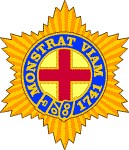
The First Corps of Cadets of Massachusetts formed in 1741. Its motto is Monstrat Viam - "It Points the Way." While it has served in several wars, the sub-unit's primary contribution to Massachusetts and to the United States was as an officer-producing institution for new regiments from the Revolutionary War through World War II.

The units of the Arkansas Militia in the Civil War to which the current Arkansas National Guard has a connection include the Arkansas State Militia, Home Guard, and State Troop regiments raised by the State of Arkansas. Like most of the United States, Arkansas had an organized militia system before the American Civil War. State law required military service of most male inhabitants of a certain age. Following the War with Mexico, the Arkansas militia experienced a decline, but as sectional frictions between the north and south began to build in the late 1850s the militia experienced a revival. By 1860 the state's militia consisted of 62 regiments divided into eight brigades, which comprised an eastern division and a western division. New regiments were added as the militia organization developed. Additionally, many counties and cities raised uniformed volunteer companies, which drilled more often and were better equipped than the un-uniformed militia. These volunteer companies were instrumental in the seizure of federal installations at Little Rock and Fort Smith, beginning in February 1861.

The Third Regiment, Arkansas State Troops, was an infantry formation of the Provisional Army of Arkansas in the Trans-Mississippi Theater of the American Civil War. The regiment was designated as the Second Regiment by the Arkansas Military Board, but was renamed the Third Regiment by Brigadier-General Nicholas B. Pearce, commander, First Division, Provisional Army of Arkansas. It is generally referred to as the "Third Regiment, Arkansas State Troops", or "Gratiot's Regiment" in contemporary accounts. The regiment is distinguished from the 3rd Arkansas Infantry Regiment which served in the Eastern Theater of War in Robert E. Lee's Army of Northern Virginia. It is also distinguished from a later state organization known as Adams' Regiment, Arkansas State Troops, which was organized in 1862 and participated in the Battle of Prairie Grove before being disbanded.
The 5th Regiment, Arkansas State Troops (1861) was an Arkansas State infantry regiment that served during the American Civil War. Formed in mid-1861, the regiment was assigned to the command of Brigadier General Nicholas Bartlett Pearce, commander, 1st Division, Provisional Army of Arkansas. It was disbanded after the Battle of Wilson's Creek in August 1861. Another Arkansas unit also had the designation 5th Arkansas, the 5th Arkansas Infantry Regiment which belonged to the Confederate Army of Tennessee. There is no connection between the two units.

The Infantry Branch is a branch of the United States Army first established in 1775.

The Tennessee State Guard (TNSG) is the state defense force of the state of Tennessee. The TNSG is organized as a military reserve force whose members drill once per month unless called to active duty. The TNSG is a branch of the Tennessee Military Department, alongside the Tennessee Army National Guard, the Tennessee Air National Guard, and the Tennessee Emergency Management Agency. The State Guard acts as a force multiplier for the state's National Guard. As a state defense force, the Tennessee State Guard cannot be federalized, and is not deployed outside the borders of Tennessee, as it is a purely state-level unit. It answers solely to the Governor of Tennessee, unlike the dual federal and state controlled National Guard. The creation of a state military force is recognized under Tennessee Code Annotated 58-1-401.
